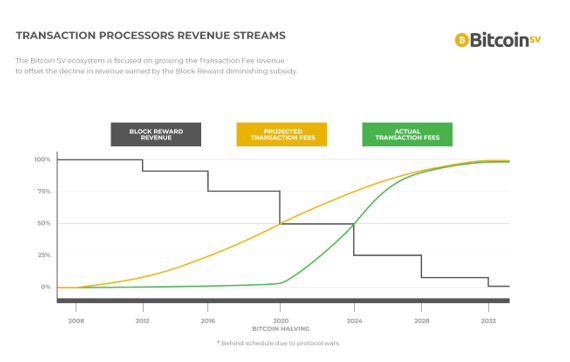Thousands of Transactions Boost Bitcoin SV Mining Success
Table of Contents
The Bitcoin community’s three-way split was caused by disagreements on scaling and protocol changes. This confused both investors and miners about where to spend their time and money. The confusion grew because only one blockchain can handle thousands of transactions efficiently. Scalability is a crucial factor for miners and users alike.
Following the two forks in 2017 and 2018, the market now has Bitcoin Core (BTC), Bitcoin Cash (BCH) and Bitcoin SV (BSV). This article argues that Bitcoin SV is the miner-friendly blockchain and the soundest investment of the three.
Bitcoin Mining
Being a miner involves considerable investment in a facility that involves hi-tech hardware, software and cooling system, not to mention overhead costs for electricity and salaries for capable engineers and technicians. Miners complete transactions to earn the right to add a new block to the blockchain. This earns them a block reward that diminishes over time. The process uses huge computing power to solve complex math problems. Every penny earned is vital for the miner’s long-term survival.
https://www.youtube.com/watch?v=XyO7767UvuQ&feature=emb_title
Miners earn in two ways: block rewards and transaction fees. Only 21 million Bitcoins were issued when the network launched, and no more will ever exist. The protocol releases these tokens to miners to bring them into circulation. Eventually, all tokens will be distributed.
Block rewards are halved every four years. The most recent halving was in May 2020, reducing the reward to 6.25 BTC. Satoshi’s design makes it clear: over time, miners must rely more on transaction fees. As block rewards shrink, transaction fees become their main source of income. And this is why scaling to increase block sizes are essential to miners’ and Bitcoin’s survival, the network needs a massive amount of transactions to be economically viable for miners to maintain and enforce the protocol rules.
Mining BTC and BCH
At present, BTC has its block size cap at 1MB, processing only a maximum of seven transactions per second, while BCH has it at 32MB, which can accommodate up to 60 transactions per second. Because BTC and BCH did not want to scale any further, revenues in transaction fees have remained very small over the years.
Image source: BitcoinSV.com
This is why BTC and BCH miners are called “block reward miners,” because the bulk of what they earn come from the block reward diminishing subsidy, which is expected to become even smaller in the next halving in 2024. It is obvious just from these basic numbers that mining BTC and BCH is a pathway to unprofitability.
Bitcoin SV Mining
What makes Bitcoin SV totally different from the two is that the network has made massive scaling a priority. Not even a year had passed after the split from BCH, and Bitcoin SV already increased its block size cap from 128MB to 2GB. In February 2020, Bitcoin SV released the Genesis Upgrade that uncapped its block size and brought back the original Bitcoin Protocol that is now set in stone.
https://www.youtube.com/watch?v=1qzTi6PiM8E&feature=emb_title
Today, Bitcoin SV can process thousands of transactions per second and is expected to reach 50,000in 2021. This makes low-cost microtransactions possible, pushing transaction volumes up and continuing to increase revenues to miners from a wider range of customers (transaction generators). The commitment to a stable protocol and massive scaling is what makes Bitcoin SV the miner- and enterprise-friendly blockchain.


Nice Article!